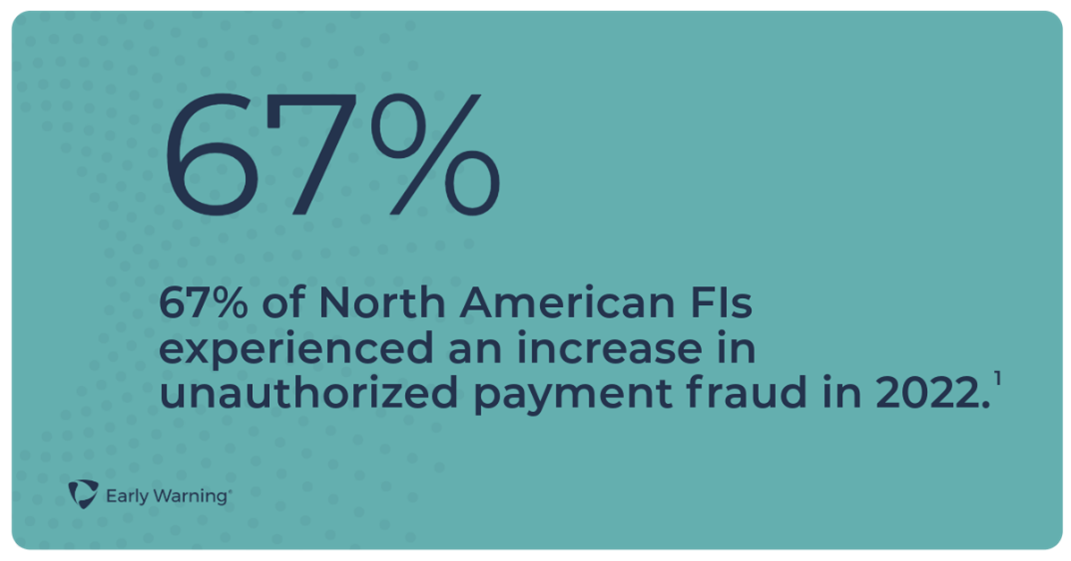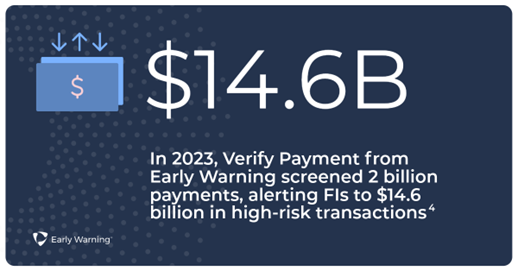Payment fraud detection is difficult to perfect. It’s a slippery form of fraud that shifts its shape as new technologies emerge. Indeed, criminals are relentless in their pursuit to steal funds via unauthorized payments—continuously innovating new schemes and tactics to evade existing fraud controls.
Financial institutions (FIs) have been investing in payment fraud detection and prevention tools and making progress in some areas, but the overall volume of payment fraud losses is troubling.
Check fraud, for example, which may seem like an outdated trend, is still going strong: Banks filed 680,00 check fraud reports in 2022—a 96 percent increase from the previous year2. And Fraudsters are devising sophisticated tactics that target trending online payment technologies. ACH payments fraud and account take overs, for example, both involve criminals gaining access to compromised or fraudulent accounts and sending unauthorized digital payments.
Payment fraud detection comes with a unique set of challenges.
As FIs work to get ahead of the latest payment fraud trends, they must put the right tools in place to successfully detect and prevent payment fraud—now and in the future. But they must do so in a way that doesn’t slow down operations, frustrate customers or disrupt compliance strategies. That’s easier said than done for multiple reasons.
- Keeping customers happy is a delicate balancing act. While consumers are drawn to the ease and convenience of digital payments, evolving banking technologies introduce the need for additional fraud controls. As they update their systems, FIs must be careful not to bog down the payment experiences consumers have come to expect.
- Compliance is complex yet critical. As if keeping pace with payment fraud trends weren’t challenging enough, FIs are also facing increasing liability and compliance issues. To help protect against fraud trends targeting online payments, for example, Nacha regularly updates its rules. Failure to comply with KYC, AML and other industry regulations can lead to hefty fines. In addition to bottom-line losses, the reputational damage stemming from non-compliance erodes customer trust, which can send consumers moving their accounts to competing institutions.
- Recouping losses can feel like an uphill battle. Liability for fraud losses has been shifting from consumers to FIs. In their attempts to recover stolen funds, banks and credit unions must allocate significant time and resources toward investigating fraud attacks. Even so, "a majority of organizations recoup less than 10 percent of funds stolen due to fraud,” according to AFP’s 20233 payments fraud report.
3 simple ingredients for a complex payment fraud detection strategy
To stay ahead of payment fraud trends, banks and credit unions need to do three key things:
- Be vigilantly proactive: As payment technologies evolve, fraudsters move quickly to take advantage of new opportunities for theft. Banks and credits unions must be able to identify and address gaps in their systems before criminals can develop new modes of attack.
- Share data across institutions: There’s no way a bank can effectively detect and prevent fraud based on their customer data alone. Using shared data to see across a consumer’s banking history and behavior is essential for fighting fraud.
- Harness modern technologies: Criminals are keeping up with the latest technologies, and FIs must fight back with equally powerful tools. Fraud control technologies are rapidly advancing, offering capabilities FIs can use to improve the speed and accuracy of risk assessments. Tools that use machine learning (ML) to instantly analyze vast amounts of data, for example, are proving effective at predicting and preventing fraud.
By investing in solutions that support those three capabilities, FIs can swiftly address their top payment fraud challenges. Payment Chek® from Early Warning, for example, analyzes data contributed by thousands of banks and credit unions using predictive intelligence and ML models. With risk scores and insights delivered in real-time, it helps FIs mitigate risk and simplify compliance—while maintaining the smooth payment experiences customers expect.
Datos Insights, What’s Top of Mind for Fraud Executives: Trends, Scams and Talent. August 2022
U.S. Treasury Financial Crimes Enforcement Network, Suspicious Activities Report Statistics (SAR Stats), 2023
Association for Financial Professionals, 2023 AFP Payments Fraud and Control Survey, 2023 4 Early Warning®, National Shared DatabaseSM Resource report, 2024



